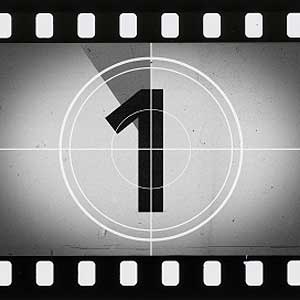One of the most astonishing art collections on the planet is housed inside an obscure museum in the dusty Central Asian town of Nukus, Uzbekistan. The Igor Savitsky Museum is home to thousands of paintings and sculptures made by artists the Soviet government had banned, all collected by a former artist and archeologist who traveled throughout the Soviet republics in a desperate search to uncover these hidden treasures.
“I found these paintings rolled up under the beds of old widows, buried in family trash, in dark corners of artists’ studios, sometimes even patching a hole in the roof,” said the late Igor Savitsky, who is quoted in The Desert of Forbidden Art, a documentary PBS will broadcast on April 5. “I ended up with a collection that no one in the Soviet Union would dare to exhibit.”
It’s easy to see why that was. Unlike the rigidity of the approved socialist realist art forms, with their happy workers and proud peasants riding tractors into the glorious Soviet future, the works Savitsky collected were ablaze with color, often took on folkloric and ethnic themes and were influenced by early 20th century avant-garde artistic movements. What Savitsky discovered was that these works were the fruit of many artists who had moved to Uzbekistan after the Russian Revolution, where, 1,700 miles from prying Moscow commissars, they had painted freely for awhile, until the Stalinist purges of the 1930s sent many of them to the gulag.

An occasional look at movies that matter.
As seen in director Amanda Pope’s film, the collection is truly world class in every aspect. Although many of the artists are hardly household names in the West, their collected works constitute one of the most significant outpourings of avant-garde art the world has ever seen. From dazzlingly colorful landscapes to idiosyncratic portraits, even sketches drawn from memory about life in Stalin’s concentration camps, the Savitsky collection literally takes your breath away.
More than that, however, The Desert of Forbidden Art is a tribute to a man who, singlehandedly, did whatever he could — plot, scheme, cajole — to preserve a precious cultural resource; Savitsky, who died in 1984, eventually saved 44,000 works of art. And it is another reminder of the myriad ways in which Stalinism corrupted culture and the minds of men.
A Savitsky quote at the end of the documentary seems to sum up his enterprise perfectly: “I like to think of the museum as a keeper of the artists’ souls.”
Comedians can certainly be truth-tellers in any society, and Bill Hicks, who died of cancer in 1993 at age 32, didn’t mince words on a variety of subjects: militarism, drug laws, sex, the insidious nature of advertising and marketing, you name it. But despite its claim that Hicks, notwithstanding his short career, was one of the greatest comedians of the modern era, American: The Bill Hicks Story fails to prove its assertion.

Told in strict chronological order, the documentary, which opens around the country this month, shows how Hicks, who grew up in Houston the son of college-educated, Southern Baptist parents, began performing as a teen and moved to L.A. to pursue a comedy career as soon as he graduated from high school. From that point, Hicks’ career trajectory went like this: amateur night at the Comedy Club to regular gigs, then a move back to Houston where he began drinking and drugging but managed to catch the eye of Jay Leno, who recommended him to David Letterman, which led to a gig on Letterman’s late night show.
Then it was binge drinking onstage until Hicks sobered up, left Houston for New York, started working with edgier material, cut an HBO special, earned raves at Montreal’s Just for Laughs Festival — sort of the Cannes Film Festival for comedians — and did a triumphant tour of the U.K.
But Hicks, who was adored in Britain, never really achieved superstar status in the states, and it’s not hard to see why. He’s funny, yes, but Hicks’ onstage personality isn’t as compelling and filled with hipster erudition as George Carlin, funny/angry as Richard Pryor, or as surreal and manic as Robin Williams. And even though the film makes a case for Hicks and his groundbreaking material, it simply didn’t break barriers like Lenny Bruce’s work did. He’s good, but it’s hard to make the case that he was all that original.
What American: The Bill Hicks Story shows, in fact, is a talented young comic whose career was cut way too short. Hicks was a work in progress until the day he died, which means we will never know if the mature Bill Hicks would have evolved into a true trailblazer. And that’s a pity.
“Like” Miller-McCune on Facebook.
Follow Miller-McCune on Twitter.
Add Miller-McCune.com news to your site.





